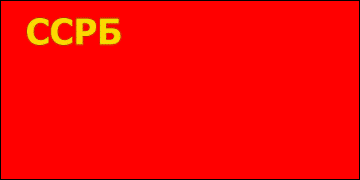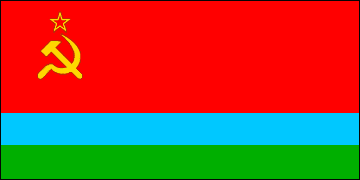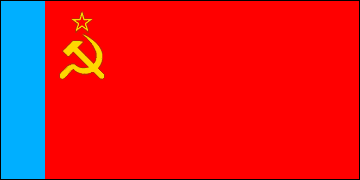|
SOCIALISM IN ONE COUNTRY |
|
|
|
FLAGS OF
THE UNION OF SOVIET SOCIALIST REPUBLICS • 1918-1991 |
|
Perhaps the most fateful consequence of the Great War was the Russian Revolution, which led to the establishment of the world's first socialist state. It was an event that raised many hopes for a better future—hopes that would be dashed as the Union of Soviet Socialist Republics turned onto the path of totalitarianism. Thereafter civil war, famine, purge, repression and massacre convulsed the lands of the former Russian Empire. But hope died hard, and even at the height of the Stalinist terror there were people on the Left in Europe and America who looked to the USSR as humanity's savior, leading the world toward a radiant socialist future. In fact, however, the voluntary union of sovereign socialist republics established in 1922 was a facade behind which the ruling Bolshevik Party recreated the tsarist empire in a new form. Lenin and Stalin after him were determined to build socialism from the center, and their gestures in the direction of federalism and ethnic autonomy were strictly tactical. When nationalism was thought to threaten Party control, it was ruthlessly stamped out. Ukraine in particular, with its language and culture distinct from Russia and its genuine national consciousness, was viewed by the Bolsheviks with suspicion and hatred. Stalin's solution was the terror famine of 1930-33. Throughout the USSR, the collectivization of Soviet agriculture was carried out by force—and in Ukraine force was applied with particular savagery, in a calculated attempt to stamp out the Ukrainian national idea. The resulting famine killed nearly four million Ukrainians, and it was followed by a vicious purge of the Ukrainian intelligentsia. In form the USSR was a union of sovereign republics. There were four of these in 1922 when the union was established: Russia, Byelorussia, Ukraine and Transcaucasia. At the time of the USSR's dissolution there were fourteen soviet socialist republics (SSRs). the fifteenth, Russia, was unique among them in that it was itself federated to accommodate various smaller national minorities in a series of autonomous soviet socialist republics (ASSRs). The Transcaucasian federated republic was dissolved in 1936, its three autonomous republics becoming union republics. The Karelo-Finnish SSR, established in 1940 by adding former Finnish territory to the existing Karelian Autonomous Soviet Socialist Republic, was probably intended to encompass the whole of Finland. But that country was able to maintain its independence after World War II, leaving the KFSSR as something of an anomaly within the USSR—in fact, only about 10% of its population was ethnic Finnish. So in 1956 it reverted to the status of an autonomous republic of the Russian Soviet Federated Socialist Republic.
The red flags of revolutionary Russia and
the USSR perpetuated the heritage of the
Red Banner,
since the time of the Paris Commune the primary symbol of revolution
and socialism. Where dates are given below, these indicate the
period of time during which the flag depicted was in official use. |

























